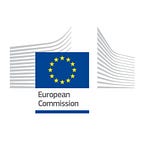Demystifying the EU budget
The reflection paper on the future of EU finances, published on 28 June 2017, is the fifth and final in a series of reflection papers launched by the European Commission.
The paper presents possibilities and reform options, mapping out opportunities, risks and trade-offs for the future of the EU budget.
Some EU countries consider their contributions to the EU budget to be excessive. A few people know that for every €100 earned, they pay an average of €50 each in taxes and social contributions — but only €1 of this goes towards funding of the EU budget.
What is the EU budget spent on?
For less than the price of a cup of coffee a day, Europeans fund an EU budget that manages a wide range of issues that go beyond national borders and require a European or international response.
From climate and energy, to migration, consumer protection, globalisation, employment, the single market and the common currency, the budget contributes to the prosperity of EU citizens and the success of common policies.
Many Europeans have first-hand experience of projects funded by the European Union. Students and young professionals study abroad thanks to the Erasmus programme, farmers receive support from the common agricultural policy, researchers and universities benefit from EU grants to further their work.
Economic strength, sustainability, solidarity and security must be the focal points for the EU finances of the future.
Did you know that…?
…thanks to the EU budget, we have Galileo: Europe’s own global satellite navigation system, which many say is the most precise in the world.
…the EU budget has given 9 million people the chance to study, train, volunteer or gain professional experience abroad, making Erasmus one of Europe’s success stories.
…thanks to the EU budget, in the area of research today we have 6 Nobel prizes, 4 Field medals and tens of discoveries with global impact like the Ebola vaccine.
Current challenges
New challenges have arisen since the current budget was designed. The refugee crisis, security concerns, cyber-threats, terrorism as well as defence require all EU countries to work together. The pressure created by these competing demands on resources has emphasised the urgent need to reflect on what kind of budget is needed for the Europe of the future.
The withdrawal of the United Kingdom will signify the loss of an important partner and contributor to the financing of EU policies and programmes. However, it also presents an opportunity for a vital discussion about the modernisation of the EU Budget.
Added value of European finances
Any reflection about the future of the EU budget should start with the most basic question of all — what is the EU budget for? European added value must be at the core of that discussion.
In recent years, there have been increasing expectations on the Union to tackle challenges for which it has neither the powers, nor the financial resources. This expectation gap is central to this debate and is directly linked both to the size and the flexibility of the new budget.
5 scenarios for the future
The paper proposes five possible scenarios for the future of EU finances:
1. Carry on: the EU27 continues on delivering its positive reform agenda
2. Doing less together: the EU27 is doing less together in all policy areas
3. Some do more: the EU27 allows groups of Member States to do more in specific areas
4. Radical redesign: the EU27 do more in some areas, while doing less elsewhere
5. Doing more together: the EU 27 decide to do more together across all policy areas
The EU budget will need to be simpler, more flexible, more streamlined and must enable more efficient spending.
For a more detailed elaboration of the future of EU budget, read the full reflection paper.
This last reflection paper contributes to the debate opened by the white paper on the future of Europe launched in March 2017, which was followed by the reflection papers on the social dimension of Europe, globalisation, economic and monetary union and defence.
